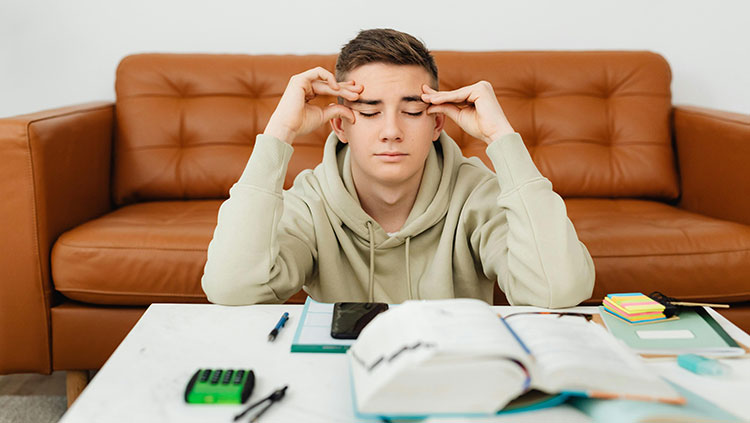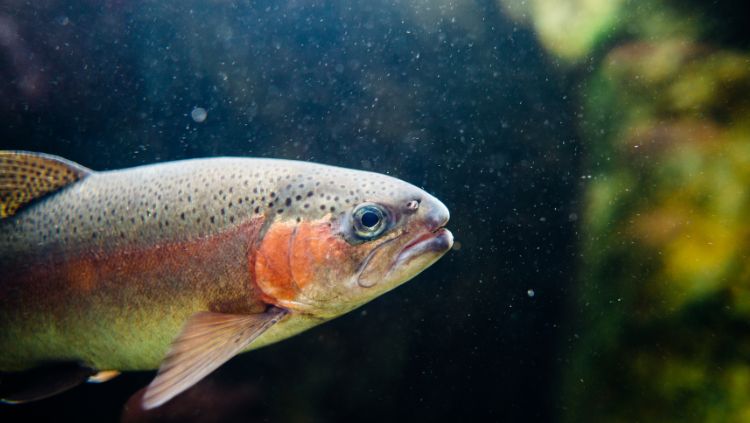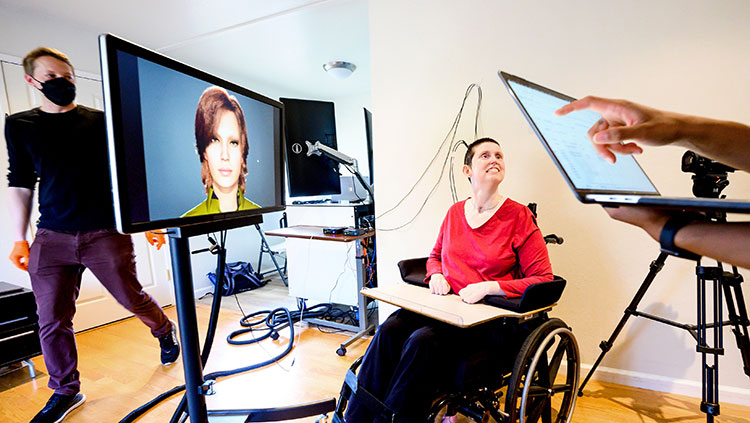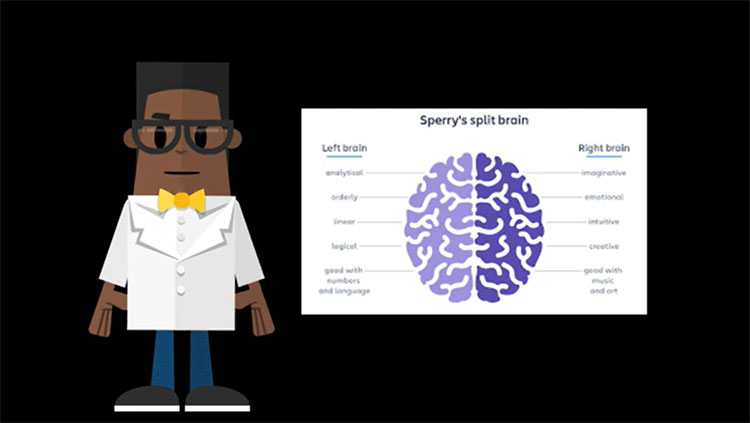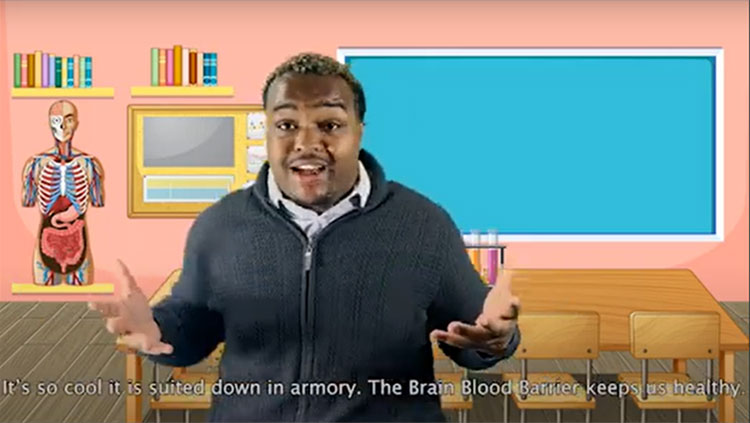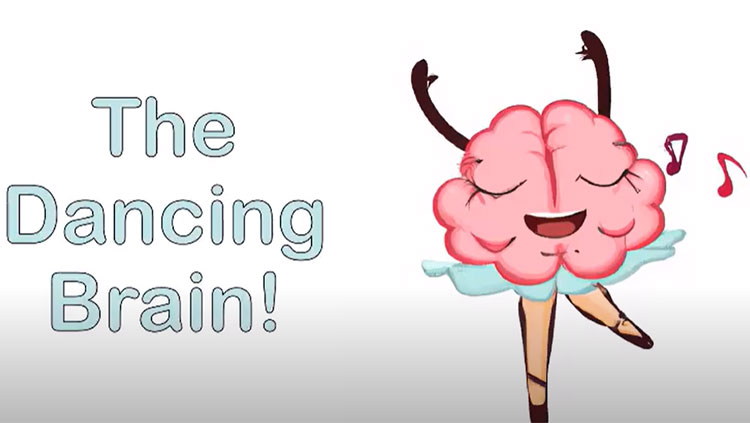The Tiny Habenula Plays a Big Role in the Brain’s Anti-Reward System
- Published25 Feb 2019
- Reviewed25 Feb 2019
- Author Brianna Abbott
- Source BrainFacts/SfN

Whether we’re seeking food, a promotion, or just a hug, humans crave reward and put considerable effort into to feeling the rush of pleasure that comes with it. But just as humans work to earn rewards, they sometimes work even harder to avoid pain or punishment.
In our brains, a group of structures called the reward system motivates us to seek pleasure. But another system also exists. Working to keep our pleasure-seeking in check, the anti-reward system is powered by a tiny, pea-sized part of our brains called the habenula. And, researchers are beginning to learn just how important it is for both motivation and mental health.
“It’s a very interesting part of the equation of human behavior that we don’t think about that often,” said Benjamin Ely, a neuroscience doctoral candidate at the Icahn School of Medicine at Mount Sinai in New York. “We have a bias toward considering the positive motivations that drive people to perform activities, rather than the negative motivations that inhibit activities.”
When we anticipate (or unexpectedly) receive a reward, neurons activate in the brain’s ventral tegmental area (VTA), a place in the midbrain that produces the neurotransmitter dopamine. Dopamine is the signal that creates that rush of joy or bliss, and it travels from the VTA to the nucleus accumbus. From there, the dopamine spreads to other structures throughout the brain, and the increased dopamine levels deliver a sense of pleasure. We’re then motivated to repeat our behavior to reach that pleasure again. It’s why you sneak another piece of chocolate or play another hand of poker after you’ve already won.
But when you lose a reward or suddenly experience a sharp pain, that’s when the habenula activates. The habenula is comprised of two parts, the lateral and the medial, which have separate structures and seemingly separate functions. Scientists don’t know much about the medial habenula, but some research into the area links it to mood regulation, decision making, and nicotine addiction. The lateral habenula, more thoroughly studied and understood, drives the anti-reward system.
Located near the thalamus in the midbrain, the small size of the habenula makes it difficult to study, especially in humans. Researchers have been looking at the structure and its influence on dopamine levels since the 1970s, though interest lagged when they couldn’t pin down a specific function.
A 2007 experiment revamped interest in the area when it revealed that neurons in the lateral habenula of monkeys became active when the monkeys failed to receive an expected reward. Since then, researchers have linked the habenula to sleep, stress, and even spatial memory, but the habenula is most widely known for its role in the anti-reward system.
“When you have a disappointment, you don’t just not feel a reward,” Ely said. “You actually feel that sense of loss.”
If you’re expecting a reward that ends up falling through or experience unexpected physical pain, the lateral habenula sends signals to cells near the VTA. Those neurons then create the neurotransmitter GABA, which blocks dopamine signaling and shuts down the reward system.
Just as the reward system is meant to encourage behavior, the anti-reward system is meant to curb it. That sense of disappointment and dip in dopamine teaches you to avoid making the same mistake, so next time you’re likely to change your behavior.
Because of its influence on dopamine levels, abnormalities in both the activity and structure of the lateral habenula are linked to disorders such as addiction, anxiety, and depression. When studying addiction in rats, researchers found that shutting down the lateral habenula in rats increases their risk-taking behavior in pursuit of reward. Too much activity in the lateral habenula, on the other hand, may trigger depression, as the anti-reward system stifles dopamine signaling leaving a person feeling joylessness or loss.
Though our understanding is far from complete, researchers believe that the lateral habenula could eventually serve as a target for substance abuse and depression therapies. “Therapies that target habenula circuitry could have amazing potential for the treatment of neuropsychiatric disease,” said Garret Stuber, a neuroscientist at the University of Washington. “Identifying selective and druggable targets that act in the habenula is the major challenge now.”
CONTENT PROVIDED BY
BrainFacts/SfN
References
Mathis, V., & Kenny, P. J. (2018). From controlled to compulsive drug-taking: The role of the habenula in addiction. Neuroscience & Biobehavioral Reviews.
doi: https://doi.org/10.1016/j.neubiorev.2018.06.018
Matsumoto, M., & Hikosaka, O. (2007). Lateral habenula as a source of negative reward signals in dopamine neurons. Nature, 447(7148), 1111–1115. doi: 10.1038/nature05860
Namboodiri, V. M. K., Rodriguez-Romaguera, J., & Stuber, G. D. (2016). The habenula. Current Biology, 26(19), R873–R877. doi: 10.1016/j.cub.2016.08.051
Viswanath, H., Carter, A. Q., Baldwin, P. R., Molfese, D. L., & Salas, R. (2014). The medial habenula: still neglected. Frontiers in human neuroscience, 7, 931. doi:10.3389/fnhum.2013.00931
Xu, C., Sun, Y., Cai, X., You, T., Zhao, H., Li, Y., & Zhao, H. (2018). Medial Habenula-Interpeduncular Nucleus Circuit Contributes to Anhedonia-Like Behavior in a Rat Model of Depression. Frontiers in Behavioral Neuroscience, 12, 238. doi:10.3389/fnbeh.2018.00238
Yang, Y., Cui, Y., Sang, K., Dong, Y., Ni, Z., Ma, S., & Hu, H. (2018). Ketamine blocks bursting in the lateral habenula to rapidly relieve depression. Nature, 554(7692), 317–322. doi: 10.1038/nature25509
Zapata, A., Hwang, E.-K., & Lupica, C. R. (2016). Lateral Habenula Involvement in Impulsive Cocaine Seeking. Neuropsychopharmacology, 42(5), 1103–1112. doi: 10.1038/npp.2016.286
Also In Anatomy
Trending
Popular articles on BrainFacts.org



